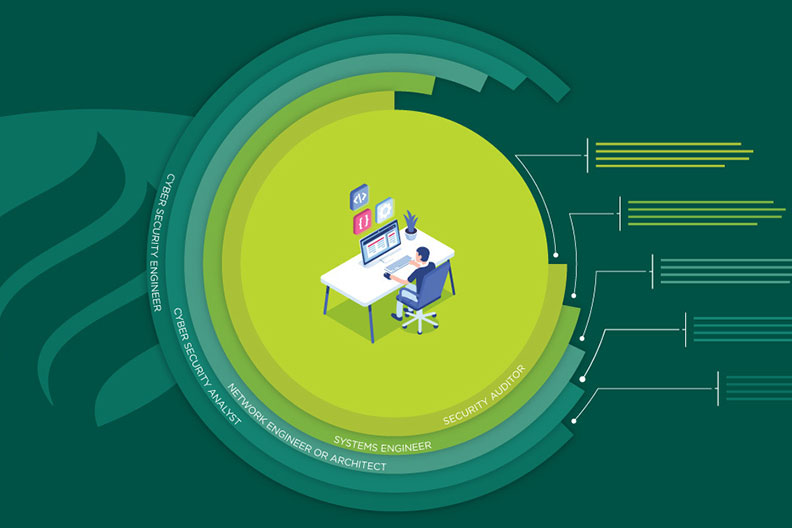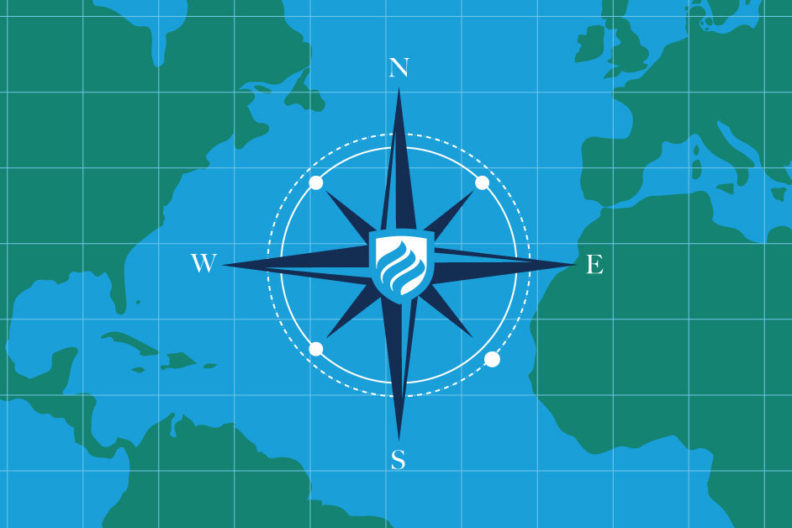What is GIS?
GRADUATE STUDIES | 9 MIN READ

Geographic information systems (GIS) might seem like a high-tech concept, but we use these spatial data sets every day. Have you ever received directions from Google, clicked around a map showing new homes on the market or checked the daily weather maps? Then you’ve used GIS.
GIS technology is pervasive in our world today, commonly found in both business and government settings. Sales associates who group prospects by physical territories or job information served on an interactive map—it all relies on geographic information systems.
But what is GIS, exactly? While the answer may seem straightforward, there is a myriad of uses for this evolving technology. The applications multiply every day and will continue to do so as big data grows ever more important to the way the world functions. As more and more entities adopt GIS, they’ll need the knowledge and talent to guide its implementation.
“You want to say it’s mapping on a computer but it’s so much more powerful than that,” said Judith Bock, director of the GIS program at Elmhurst University. “It really is the analytical power to add and combine data in ways that answer questions, solve problems or provide a fresh perspective on the issues of today.”
A graduate education in GIS can create wide-open career opportunities in both the private and public sector. If you’re interested in taking such steps, it’s important to first become familiar with geographic information systems, what they are and how they can be used.
What are Geographic Information Systems?
In the most basic sense, geographic information systems are tools that provide context to information beyond a specific physical location. They take data and arrange it in a layered, interactive map that can be analyzed for any number of reasons, whether it’s to examine concentrations of mineral resources, plot insurance claims or plan transportation routes.
“Geographic information systems provide a visual and spatial context that goes beyond the verbal and statistical context,” Bock said. “These systems are tools. The skills you learn using these tools to manipulate data and analysis help you make better decisions within modern industries.”
Yet the ideas behind geographic information systems are nothing new. Physician John Snow used some of the same concepts to combat a deadly cholera outbreak in 1854 London. Snow gathered detailed data on cholera instances and overlaid them on a map. Building that connection allowed him to identify the spatial relationships between outbreaks and a water pump suspected to be contaminated.
Today, the application of GIS is still a two-part process, but now one that relies heavily on both computer hardware and software. The first part involves the database that captures, stores, organizes, cleans and displays data. The second generates a map that can be manipulated by users. The collection and sorting of spatial data help tame an unstructured data source, while the visualization allows for insights in decision-making or problem-solving.
On the technical side, geographic information systems are usually divided into two camps, those that use raster data models and those that use vector models.
- Raster models generate maps that are made up of pixels or cells. The grid format is a familiar one for most, with the greater map being a collection of smaller squares or pixels that can be even further parsed. Such formats are typically best suited for data that changes or that demonstrates differences, such as in elevation above sea level. Raster data originally relied on satellite and remote sensing technologies to create photographic and satellite imagery. Today, much of the imagery is captured as digital images to better integrate with vector models.
- Vector models create maps using simple geometric concepts like points, lines and polygons. These maps often tend to be better for demonstrating spatial relationships, boundaries, land parcels and infrastructure. Urban planning is a GIS application that would be more likely to utilize vector than raster models. Vector data relies on global positioning systems (GPS).
GIS relies on many sources of data collection, such as remote sensing and GPS.
There are many layers to GIS tools, which is fitting considering such systems can be used to analyze the Earth’s crust. The foundational level is the topography itself. The physical lay of the land can be rendered using different sources, including satellite photography, aerial images, cartographic resources, sensors and survey scans, among others. From there, other factor-based data, like demographic or environmental information, is expressed in a map and other virtual formats for analysis.
What is Geographic Information Science?
Often shortened to GIScience, geographic information science is the study and use of GIS in theory and practical settings. Generally, it refers to the professional processes of capturing, storing, organizing, validating and visualizing spatial data. GIScience incorporates elements of database management, data science and computer science.
Snow’s cholera map is one of the most famous examples of a geographic information system, yet it shows exactly how GIS can be leveraged in the modern age—as a tool for use in both observation and decision-making. GIS can be both active and passive. For example, a public utility might use a GIS as the focal tool in a project compiling outage data, while it could use the same solution to monitor the age of its equipment and identify the most cost-effective and timely repairs. Use cases will continue to increase as GIS functionality expands. However, there are core GIS applications that can be used regardless of industry:
- Mapping quantities: Whether it concerns population density or the concentration of natural resources, quantity mapping is one of the foremost current uses for GIS. These types of maps are valuable for both reference and analysis. Each business or organization has some metrics it needs to track, and quantity mapping with GIS is a way to automate the collection and visualization of those critical data points.
- Monitoring conditions: Detecting change isn’t always easy from an indirect position—consider geologists who watch seismic activity from continents away—but GIS can make the task easier. Maps that are fed real-time data, for example, can give agriculture businesses greater insight into crop yields in the same way that such tools could indicate a change in atmosphere to public health officials, who may institute an alert for a certain area. Real-time data is used to monitor air travel and fires.
- Identifying patterns: Unstructured data is difficult to extract insight from, but companies and government agencies often have loads of it. Contextualizing that data through GIS mapping can uncover insights that were hidden in the scatter. The more data that’s pumped into a system, the better the quality of intelligence. GIS can put unusable data into action and help highlight notable patterns or anomalies. Patterns of potential landslide regions can alert a community to this potential danger. The military can monitor troop movements and provide intelligence on the battlefield.
- Computing distance: There are many situations in which knowing the exact spatial relationship between two objects would be valuable. Imagine trying to plan and zone a retail development or start a service for aggregating delivery times for local restaurants. In both cases, a GIS could be used to analyze the spatial relationships between geographic points. Users can also query their GIS database to get the relational information they need.
What Jobs Require GIS?
The bigger question is: Which industries don’t make use of geographic information systems? There is an ever-growing number of GIS applications, and career prospects, that can be found in:
- Supply chain management. Optimizing the supply chain has become a central objective for all types of businesses, and GIS applications are a powerful tool for decision-makers, whether on the procurement side or the supply side. A manager who can visualize his or her global network of suppliers can more easily manage risk. In the same vein, a fleet manager with a GIS solution has better oversight of vehicles in transit and can respond to delays or obstacles with greater agility. Ecommerce has also become a huge segment of the economy, and the shipping industry has grown with it. Now, two-day delivery is expected, and web-based operations can use GIS to give customers accurate updates on their packages.
- Government. The public sector is a sprawling one, but each agency—whether at the federal, state or local level—can make some use of GIS. The Centers for Disease Control and Prevention, for instance, has an entire index of interactive GIS maps that the public can use to visualize topics like cancer in America, diabetes trends and city-specific statistics. The FDA also has GIS-based maps to assist in recalls and public health awareness. On a smaller scale, municipal assessment offices can use GIS to arrange the tax or property information they collect to better understand and serve local populations.
- Energy. The career opportunities for GIS-trained professionals in energy seem endless. They can find work as maintenance and installation experts at public utilities; project managers at oil and gas businesses; turbine operators for renewable energy companies; climate experts at meteorological institutions; or, software developers for mining operations.
Gain Expertise and Answer ‘What is GIS?’ for Yourself
Getting a GIS-focused education can help you build that technical competency needed to guide adoption or further innovate these tools. At Elmhurst University, you can pursue either a master’s degree in GIS or graduate certificate in GIS, which can prepare you for a range of careers.
Request more information today!

